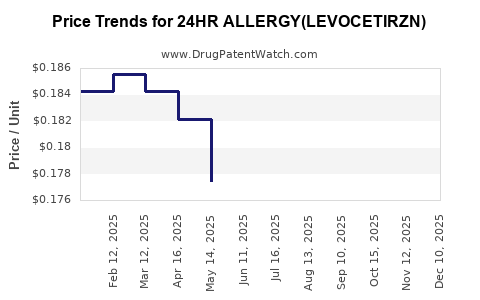Drug Price Trends for 24HR ALLERGY(LEVOCETIRZN)
✉ Email this page to a colleague

Average Pharmacy Cost for 24HR ALLERGY(LEVOCETIRZN)
| Drug Name | NDC | Price/Unit ($) | Unit | Date |
|---|---|---|---|---|
| 24HR ALLERGY(LEVOCETIRZN) 5 MG | 70000-0362-02 | 0.17690 | EACH | 2024-11-20 |
| 24HR ALLERGY(LEVOCETIRZN) 5 MG | 70000-0362-01 | 0.17690 | EACH | 2024-11-20 |
| 24HR ALLERGY(LEVOCETIRZN) 5 MG | 70000-0362-02 | 0.17311 | EACH | 2024-10-23 |
| >Drug Name | >NDC | >Price/Unit ($) | >Unit | >Date |


